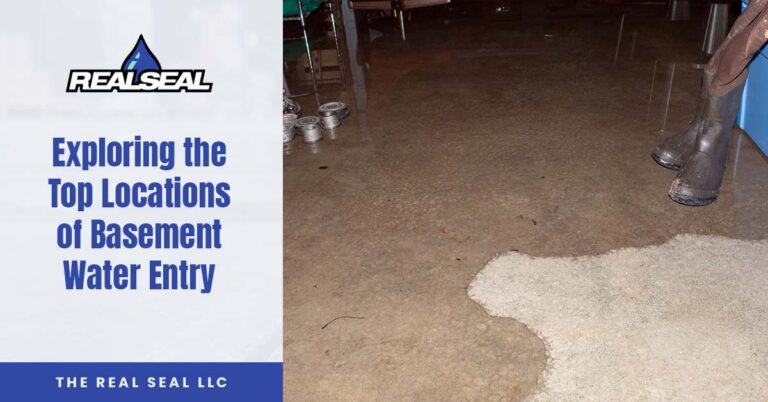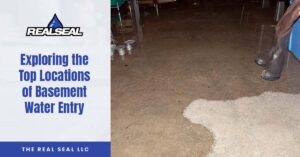Of all homes with basements, over 98% will experience some type of water damage. But while most homeowners have witnessed the end result of a wet basement, not all homeowners know where the water actually comes from. Little do most people know, there are a number of common entry points in any basement that can become prone to leaking and make your basement more vulnerable to damage. Here are just a few areas in basements that are common water entry points.
‘Honeycomb’ Concrete
This type of concrete damage may not always be visible, but it’s a common entry point for water. This type of leakage is a direct result of concrete being initially poured and set improperly. Inadequately mixed concrete often creates air pockets when it’s poured, which can become susceptible to water leakage over time. These cavities are typically referred to as ‘honeycombs,’ but they aren’t quite as sweet as the real thing. Get a professional evaluation immediately if you notice this type of damage; honeycombs can generally be fixed pretty easily.
Floor Cracks
Hydrostatic pressure is a natural effect that the weight of the water in the ground has on your home’s foundation. While common, this effect can cause your basement flooring to crack and become more prone to water leaking and damage over time. Many times, these cracks aren’t easily seen, so it’s best to consult a waterproofing contractor for a thorough assessment.
Wall and Floor Joints
Finally, one cause of basement water damage that’s incredibly difficult to spot is when the concrete floor and wall on one side of your basement isn’t thoroughly bonded through the foundation. Over time, this creates a channel that can collect water and cause unseen damage.
Though knowing the most common water entry points is helpful, it’s also essential to know what to do if basement flooding occurs. Remove any organic items such as bedding, towels, and upholstery that have been damaged by the basement flood. If they don’t dry within 48 hours, throw them away because they’ll start to mold. After that, it’s time to seek out basement waterproofing help to ensure your basement doesn’t sustain any more damage. For more information about basement waterproofing help, contact The Real Seal LLC.






